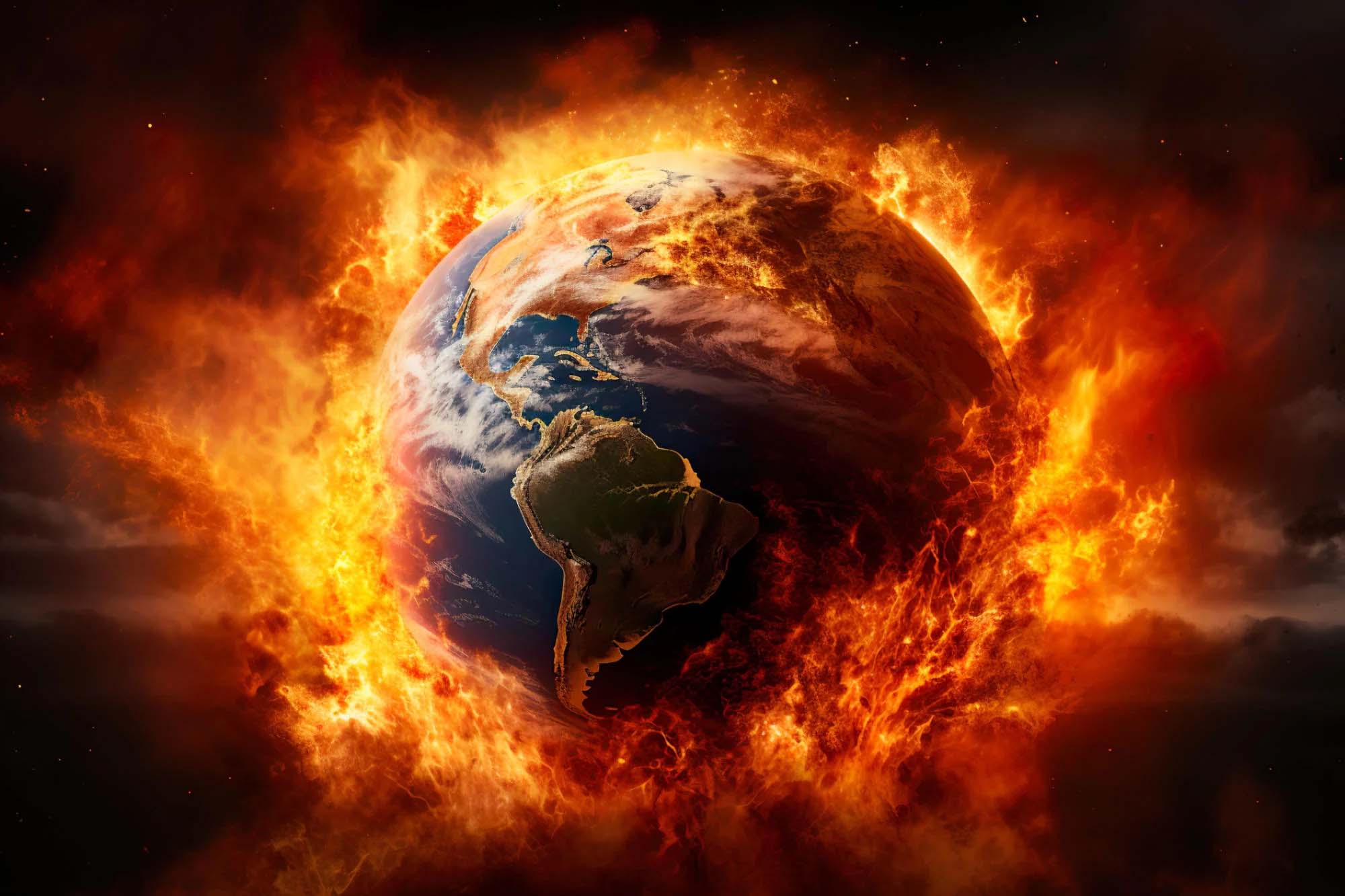The relentless march of global warming, a phenomenon primarily driven by human activity, continues unabated, surging at a rate of 0.26 °C per decade, a pace unparalleled in historical records. This stark revelation emerges from the latest findings of the second annual Indicators of Global Climate Change report, spearheaded by a consortium of over 50 esteemed scientists from across the globe, under the auspices of the University of Leeds.
Spanning the decade from 2014 to 2023, human-induced warming has surged to 1.19 °C, marking a notable escalation from the 1.14 °C recorded in the preceding decade of 2013-2022, as delineated in the previous year’s report.
Delving deeper into the data, an isolated examination of 2023 reveals a spike in human-caused warming, reaching 1.3 °C. However, this figure stands lower than the overall warming experienced that year, tallying at 1.43 °C, underscoring the nuanced interplay of natural climate variations, notably the influence of El Niño, in shaping temperature trends.
Further analysis underscores a sobering reality: the remaining carbon budget teeters precariously, with only approximately 200 gigatonnes – equivalent to a mere five years’ worth of current emissions – separating us from the threshold of 1.5 °C global warming. A disconcerting revelation, especially juxtaposed against earlier projections by the Intergovernmental Panel on Climate Change (IPCC), which estimated a more generous carbon budget ranging from 300 to 900 gigatonnes of carbon dioxide for the same temperature threshold back in 2020. Regrettably, the trajectory of CO2 emissions and consequent global warming has continued its remorseless ascent, with the beginning of 2024 witnessing a narrowed carbon budget of 100 to 450 gigatonnes, with a central estimate resting at a paltry 200 gigatonnes.
At the helm of the Indicators of Global Climate Change Project stands Professor Piers Forster, the eminent Director of the Priestley Centre for Climate Futures at the University of Leeds. Reflecting on the findings, he laments, “Despite concerted efforts to curtail greenhouse gas emissions, our analysis underscores an alarming reality: global temperatures persist in their inexorable ascent, propelled by human actions, and at a velocity unprecedented in history.”
As the global community convenes in Bonn to lay the groundwork for COP29, slated for November in Baku, Azerbaijan, the urgency of the situation reverberates. However, this urgency is tempered by an acute “information gap,” as the next major assessment by the IPCC is not slated until approximately 2027, leaving a critical void in monitoring and responding to swiftly evolving climate indicators.
To bridge this gap, the report is accompanied by a groundbreaking initiative: the Climate Change Tracker’s Indicators of Global Climate Change dashboard, an open data, open science platform that democratizes access to real-time updates on key climate metrics.
In addition to its revelations on carbon budgets and temperature trends, the report offers fresh insights into the repercussions of sulphur emissions reductions from the global shipping sector. While sulphur emissions historically conferred a cooling effect by augmenting the Earth’s albedo, recent reductions have mitigated this influence. Despite sporadic offsets, such as aerosol emissions from the Canadian wildfires, the long-term trajectory portends a diminishing capacity for aerosol-induced cooling.
Among the report’s salient findings is the inexorable march of human-induced warming, escalating to 1.19 °C over the past decade, a trajectory unmatched in historical records. This alarming rate of warming, propelled by sustained high levels of greenhouse gas emissions, approximating 53 billion tonnes of CO2 annually, coupled with advances in air quality, underscores the complex interplay of anthropogenic and natural drivers in shaping climate dynamics.
Furthermore, the repercussions of elevated GHG emissions reverberate across Earth’s energy balance, manifesting in unprecedented heat fluxes into oceans, ice caps, soils, and the atmosphere, surpassing historical averages by 50%.
Professor Forster elucidates, “While fossil fuel emissions remain the primary driver of climate change, contributions from ancillary sources such as cement production, agriculture, deforestation, and modifications to sulphur emissions are not negligible. Urgent action to curtail emissions and transition towards net zero is imperative to mitigate the trajectory of global warming and avert the catastrophic repercussions witnessed in 2023.”
In the crucible of escalating climate crises, the report assumes added significance, serving as a clarion call to action as nations prepare to unveil enhanced climate pledges under the UNFCCC by 2025.




